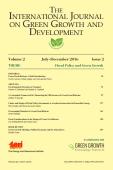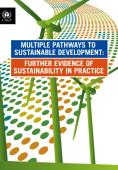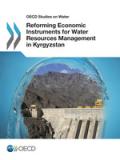Collaborative partnerships are widely cited as a key solution to green growth; a way to address the Sustainable Development Goals and problems thrown up by globalisation. There is barely an environmental or developmental issue today for which there is not a multi-sector partnership. The rationale is simple – the complexity of green growth and the interdependency of the issues means that no single institution or sector can effectively respond to today’s challenges.
Partnership building is not as simple - the energy and enthusiasm around green growth partnerships can mask the difficulty of making them happen. It’s not easy bringing together individuals and organizations from the public and private sector with different cultures, interests, incentives, value systems and expectations. Effective partnerships manage these differences with a rigorous approach, underpinned by the right mindset and skillset.

The International Journal on Green Growth and Development is an effort to stir a debate around emerging “green” concepts and development. The publication aims at building knowledge through stakeholder engagement on policy-relevant issues to understand the many facets of green growth and development. It is a step towards a forward-looking knowledge process for new opportunities linked with growth and sustainable development. The journal showcases new research through peer reviewed articles, opinions, and innovative practices.
Published by The Energy and Resources Institute (TERI) and in collaboration with the GGKP, the papers in the journal were commissioned by the GGKP Fiscal Instruments Research Committee for the Third GGKP Annual Conference, held in 2015 on the theme of Fiscal Policies and the Green Economy Transition: Generating Knowledge – Creating Impact.
Since 2010 the GEC has been tracking the transition to green economies by drawing on the experiences and insights of GEC members and gathering different perspectives from different regions. The report aims to provide a brief but broad picture of what has been happening recently and where. It is focused on the five principles of change that define the GEC’s understanding of a green economy: 1. Economics for nature; 2. Green must be fair; 3. Transforming economic sectors; 4. Moving the money; 5. Measuring what matters.

In 2013, following the UNEP Governing Council Decision and with the support of the government of China, UNEP began work to share the South’s various experiences and national-level initiatives for transitioning to sustainable and socially inclusive economies. This work culminated in 2015 when UNEP published a report, entitled Multiple Pathways to Sustainable Development: Initial Findings from the Global South, that highlighted four unique national initiatives: Living Well in Bolivia, Ecological Civilization in China, Green Economy in South Africa, and Sufficiency Economy in Thailand.
This report serves to build on that earlier publication by examining four additional approaches that have been adopted at the country or regional level: Circular Economy in the European Union (EU) and Germany, Natural Capital Accounting in Botswana, Payment for Ecosystem Services in Costa Rica, and Gross National Happiness in Bhutan. The purpose is to show that there is no “one size fits all” approach to sustainable development, but rather a range of concepts, methodologies, and tools that can be used, depending on the specific context.

